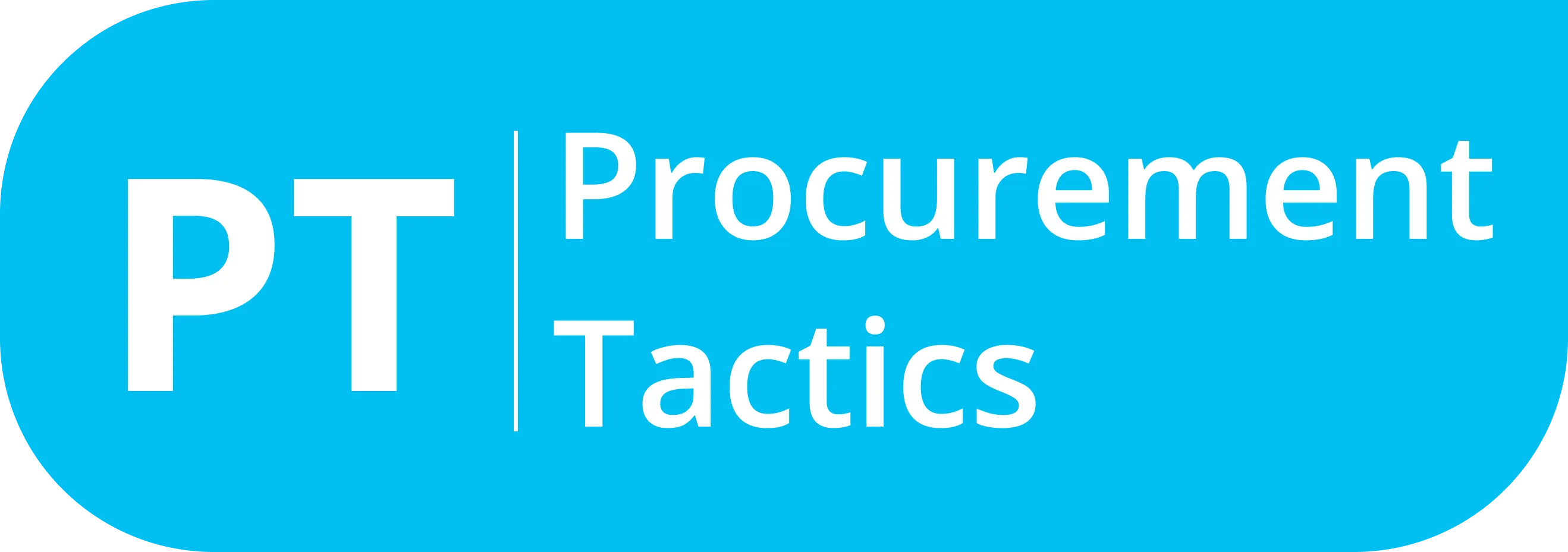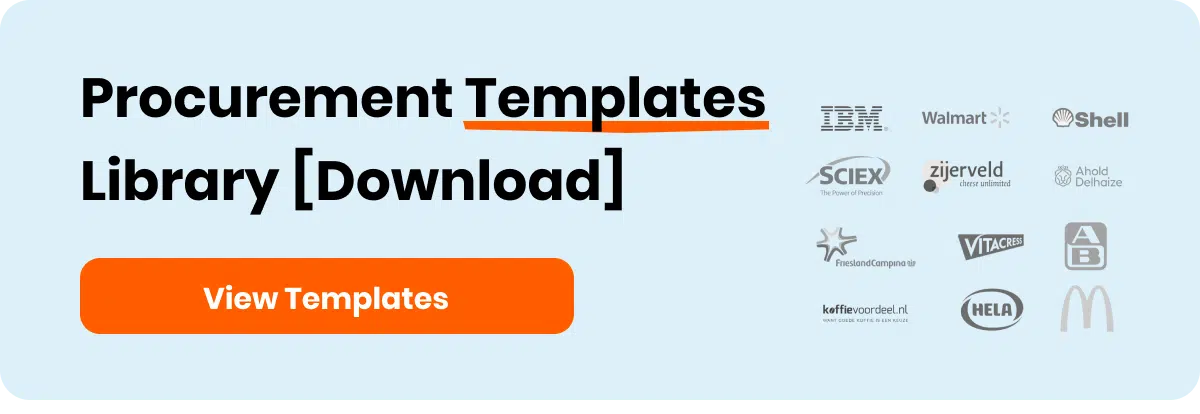ChatGPT & AI in
Procurement Course
Free Preview Lesson

Written by Marijn Overvest | Reviewed by Sjoerd Goedhart | Fact Checked by Ruud Emonds | Our editorial policy
Material Procurement – The Ultimate Guide of 2024
Table of content
Key takeaways
- Material procurement refers to the process of getting the required materials for a project.
- Material management refers to the process of sourcing, purchasing, moving, handling, and controlling materials.
- Direct materials are those that go directly to the creation of a product or project. Whereas indirect materials are the things that make the product.
We already have a hint when we see the word material procurement. But if we look into it, there is a much deeper understanding of material procurement. But what is it and how is it done?
For this article, we will explore the world of material procurement. How it is important and its advantages.
Once you finish reading this article, you will have a full understanding of material procurement. This will allow you to use it in your future projects as a procurement manager. Let’s now begin exploring the world of material procurement.
What is Material Procurement?
Procurement is a term that has already registered its meaning in our minds. It is about purchasing or acquiring the goods or services that the business needs to operate.
Material procurement comes in when we talk about building a project. It is the process of acquiring the required materials for the construction of a project. Material procurement is similar to construction procurement.
A procurement team is responsible for procurement activities for products, materials, and subcontractors. Procuring material is the most important part of material procurement as contractors may be overwhelmed by all the requests. Especially from suppliers who will provide the goods and services for the project.
Its Connection with Material Management
Materials management is a key to good material procurement. It boosts productivity and efficiency in constructing a project. Material management refers to the combined process of sourcing, purchasing, moving, handling, and controlling the materials.
Disruption to material procurement may result in a loss of profit and customer trust. That is why effective material procurement needs good material management.
What is a Material Manager?
The material manager is the one tasked to maintain the material procurement and all the other processes involved. It also oversees material management.
The material manager does not just manage the flow of delivery but seeks to manage cost and quality throughout the supply chain.
The material manager supervises inventory management. It checks if all the materials are available and sufficient for the span the project will be constructed.
Two Types of Materials
The following are the two types of materials in procurement:
1. Direct materials
Direct materials are those that go directly into the product or project. This represents the cost and benefit of the product itself. An example of these items are pipes, hollow blocks, cement, wood, and glass.
The availability of direct materials is crucial for the success of a project. If these materials are not available at the time you need them, the company may incur great losses.
2. Indirect Materials
These materials are part of the project but do not become part of it. In simple terms, it is the things that make the product. An example of these materials includes equipment and spare parts such as hammers, drills, screwdrivers, and nails.
Its value may not be seen but the absence of these materials will have a great impact on the project. It will greatly affect the process and result of the project if these materials are not available.
Importance of Material Procurement
Material procurement is focused on acquiring materials for the project. If there is no material procurement, then the project will ultimately fail. Many consequences may arise if material procurement is not taken seriously. This includes delay, overspending, and scarcity of supplies.
Material procurement is not just about acquiring materials but also procuring things that are good in quality and cost-efficient.
If material procurement is done right, then then the project will surely succeed. Because it lays out all the things that will be needed for the project. This allows for a smooth and cost-efficient construction of the project.
Benefits of Material Procurement
Here are some of the benefits that you can gain by having an efficient material procurement:
1. Competitive Bidding and Quality of Materials
Material Procurement seeks to acquire goods that have a competitive price. This is where bidding comes in. A list of suppliers will be prepared and then it will be narrowed down as the process goes on.
When selecting a supplier, the business may prefer those who match their budget and requirements. This benefits the company as they will not go beyond their allotted budget while still being true to the quality.
However, environmentally friendly materials just because it has a lower price. Some businesses also consider the quantity they can supply for the span of the project. This allows businesses to be at an advantage as negotiation is in their hands.
2. Sustainability
Material Procurement helps the project to be sustainable until it has been constructed. It assists the project by checking if the needed supplies are available in the inventory.
Sustainable material procurement also assessed value for money and the environment. Some businesses may source environmentally friendly materials combined with value for money.
3. No Delays
Material procurement lessens or even eliminates the risks of delays. This is due to the availability of the needed materials in the inventory. Material procurement ensures that all deliveries will be made on time. It also checks the accuracy of the materials that arrive. This allows the construction of the project to be free from delays which results in finishing on time.
Tips for Procuring Materia is as a Procurement Manager
Here are some tips that we recommend you should do to make your material procurement efficient:
1. Know your Suppliers
Throughout the years, there has been a growing dependence on suppliers paired with a complex supply chain that makes it hard to manage. In addition, social media has a great impact on the reputation of the supplier as it can amplify scandals with just one wrong move. Due to this, you must know your suppliers are compliant from the start.
Procurement managers must make sure that they have a solid understanding of their suppliers. This is to make sure that suppliers can comply with their requirements to aid their procurement process.
2. Use Procurement Tools and Platforms
With the advancement in technology, no shortage of tech solutions on the market will surely make your procurement tasks easier. Using procurement tools and platforms streamlines the process of procurement. It also makes communication and collaboration with your team easier.
Implementing new platforms in your system will optimize your department. You will also generate more data that you can use to develop better purchasing management. Furthermore, this can improve your decision-making and your negotiations with your suppliers.
3. Accept that you Cannot do it all Alone
To procure your materials properly, you should know that you cannot do it all alone. Having a team with whom you can delegate your tasks can make you focus on improving other aspects of the procurement process.
Being in a team saves you more time by getting rid of jobs such as invoicing and spending analytics. This will allow you to streamline the process of procurement which will bring efficiencies and growth to the company.
Procurement Expert’s Insights on Material Procurement
For this article, we asked an experienced procurement expert to share her insights to help answer common questions about material procurement.
Nesrin Chabbah
Senior Lead Buyer
LinkedIn Profile: linkedin.com/in/nesrin-chabbeh
1. What do most people get wrong about material procurement?
“Material management’s crucial role is often underestimated. It encompasses efficient material flow considering factors like demand, price, and quality. Misconceptions stem from not realizing its influence in maximizing profits through JIT inventory management. Effective material management minimizes waste, enhances inventory accuracy, and optimizes transport, significantly benefiting the supply chain. Recognizing its significance is key for streamlined operations and substantial cost savings.”
2. What should people know about material procurement if they are planning to start working on this?
“Material procurement is about acquiring needed project materials. It’s tightly linked with efficient material management. This ensures smooth sourcing, purchasing, and handling of materials. Effective procurement is crucial for project success and client satisfaction, and proper material management is key to achieving this.”
3. From your experience, what is the most important thing you learned about material procurement?
“Successful material procurement hinges on effective material management, guaranteeing timely sourcing, cost-efficiency, and optimal resource use. The integration of these elements profoundly influences project success and overall business performance.”
4. What tips can you give them to be effective in material procurement?
“To enhance material procurement effectiveness, prioritize streamlined processes, utilize technology for automation, foster robust supplier relationships, optimize inventory, ensure compliance, provide continuous staff training, conduct cost analysis, integrate sustainability, and manage risks effectively. These factors collectively optimize material sourcing, benefiting both project outcomes and broader business operations.”
5. Can you give us examples and tips on how you sourced materials locally and internationally?
“When sourcing materials locally, we initiate by engaging with our existing supplier to evaluate their capacity to fulfill our requirements. If that’s not feasible, we explore the option of manufacturing the products ourselves. If this isn’t viable either, we reach out to potential local suppliers, often leveraging market research to identify several options. On the international front, we start by reaching out to our existing international suppliers while integrating a rigorous risk management assessment for any new potential supplier we approach. This meticulous approach helps us secure reliable material sources both locally and globally.
For example, when we were sourcing materials locally for a recent project, we began by contacting our current supplier, and upon finding their capabilities limited, we explored the possibility of local manufacturing. Additionally, market research revealed several potential local suppliers, broadening our options. On the international level, we engaged our existing international suppliers and incorporated risk management practices, ensuring a thorough assessment of any new potential supplier contacted, thus assuring a stable and diversified global material supply chain.”
In Conclusion
Material procurement plays a crucial role in the success of any construction project. It involves acquiring the necessary materials through a well-managed process overseen by a dedicated material manager. Material procurement is closely tied to material management, emphasizing the importance of efficient sourcing, purchasing, moving, handling, and controlling of materials.
In a rapidly evolving business landscape, acknowledging that one cannot handle all aspects alone is crucial for procurement managers. Delegating tasks to a competent team allows managers to focus on improving overall procurement processes, leading to increased efficiency and growth for the company.
All in all, material procurement is a strategic process that, when done right, leads to successful project outcomes. It involves careful planning, effective management, and a focus on quality, cost-efficiency, and sustainability.
Frequentlyasked questions
What is material procurement?
Material procurement is the process of acquiring materials needed to construct a project.
What does a material manager do?
A material manager manages the entirety of material procurement and material management.
Is material procurement important?
Material procurement is important to successfully build a project. It is what determines the project’s materials, costs, and the time it takes to be constructed.
About the author
My name is Marijn Overvest, I’m the founder of Procurement Tactics. I have a deep passion for procurement, and I’ve upskilled over 200 procurement teams from all over the world. When I’m not working, I love running and cycling.


